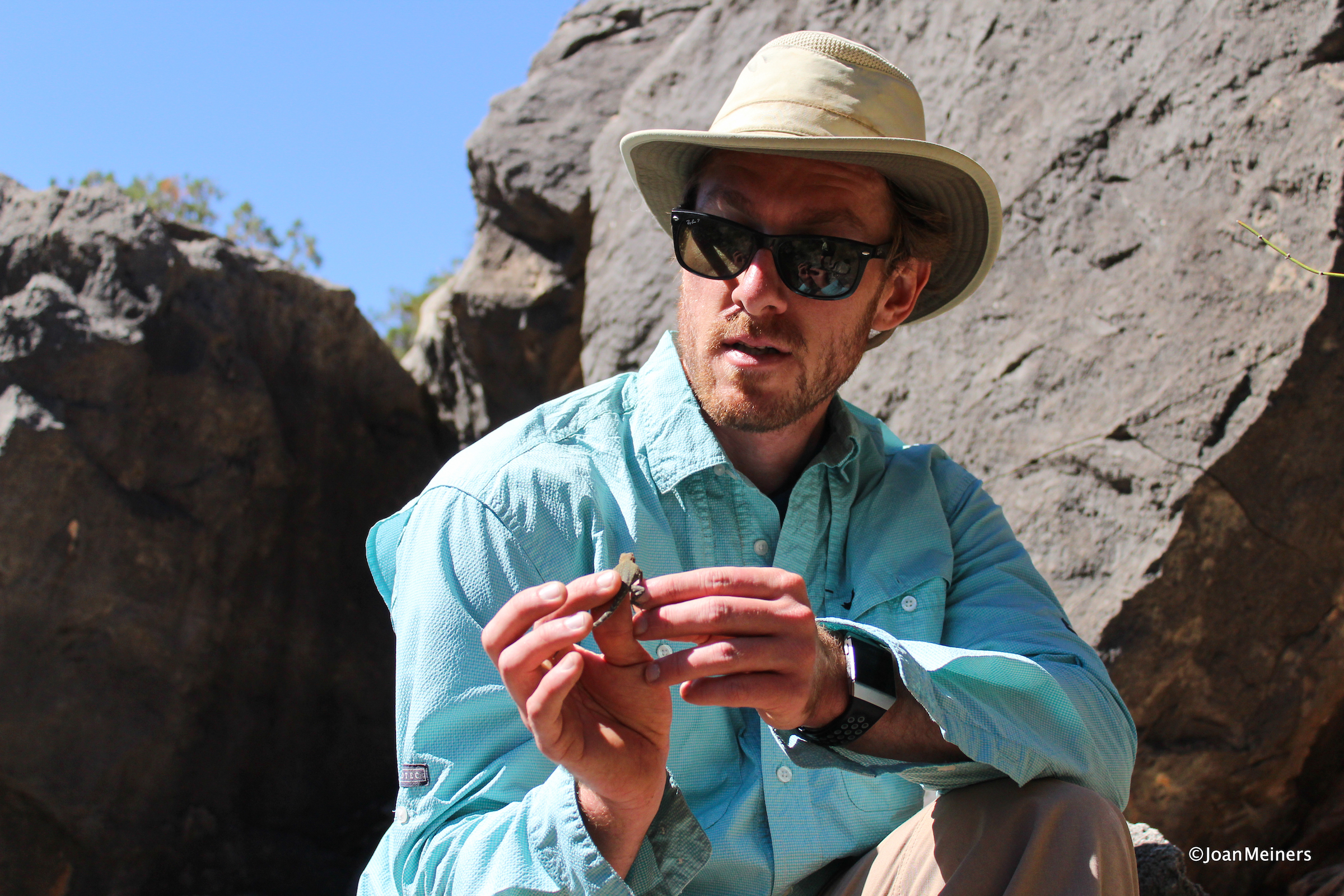Some information may be outdated.
What if you came face-to-face with living, breathing dinosaurs and could investigate their lives? That’s how Dr. Geoffrey Smith, a physiological ecologist at Dixie State University, sees his study of Utah reptiles. This week, we speak with Dr. Smith about desert adaptations, large bladders, and backyard creeks.
Science Moab: What exactly is animal physiology?
Smith: Physiology is how an organism works. Animal physiology is looking at different organ systems and how they operate with each other. With anatomy, you dissect an animal and take it all apart and see where the parts go. But with physiology, I think about live animals. What are they doing? How do animals survive in extreme places? In southwestern Utah, it’s particularly dry, and we don’t have very much cushion for big swings in temperature. So it’s not just extreme heat or cold; it’s the ability to deal with both. It reminds me of how fragile we are as a species and how fragile life is, especially animals and plants in places like this. They’ve got to find a way to make a living and reproduce and not get eaten by something along the way.
Science Moab: What kinds of lizard species are in Utah?
Smith: We have about 57 turtle, snake, and lizard species. About 44 of them are here in Washington County in southwestern Utah. Twelve or so are only found here and are not found in the rest of the state. And that’s really special. We have the luxury of having the Mojave Desert creep up into the southwestern corner of the state. We also have a good bit of the Colorado Plateau and the Great Basin desert. So this confluence of eco-regions makes for a lot of different types of species.
Science Moab: Do most desert animals you study have similar survival strategies?
Smith: There are really different strategies. For example, I’ve been privileged to work with the Mojave desert tortoise this spring. They stay burrowed for a large proportion of the year. A lot of their lives are spent not doing very much at all.
They also have a really remarkable anatomical and physiological adaptation. They’ve got a gigantic urinary bladder that can hold about a third of their body weight, and they have this really dilute urine. They can drink a ton of water whenever that water is available, and then reabsorb it later on in the year. This is one of the reasons people are discouraged from picking up a desert tortoise, because if you pick it up, it pees all over your feet. Then you set it down, and you leave. But it could be eight weeks before it rains again. This turtle has been carrying around a Camelbak inside its body, and now that’s gone.
But they still have to deal with water and humidity. And now there are all sorts of novel pressures, like automobiles. Those can really damage the population curve.
Science Moab: Speaking of changes, do different species have different reactions to climate change in southwestern Utah?
Smith: Climate change can have lots of different outcomes for these sorts of species. In fact, for lizards, it might increase their habitable range; they might move into Canada in a couple of decades. However, lots of really interesting things are going to be gone. We live in a world with elephants and polar bears, and these charismatic megafauna are all on the brink. That’s going to be a loss for everyone. And lots of things probably won’t be able to be studied anymore, because the environment will be beyond what humans can deal with.
Science Moab: What interested you in animal physiology?
Smith: I grew up in Arkansas, Mississippi and Louisiana, where there were all sorts of lizards and snakes and turtles. So I spent a lot of time in creeks. A lot of kids do that, and a lot of kids grow out of that phase; I continued with it. I honestly can’t understand how somebody couldn’t get jazzed about these animals. People get so excited about dinosaurs, but we have these living things that are here now, breathing right in front of us. And the question is, what are they doing?
Science Moab is a nonprofit dedicated to engaging community members and visitors with the science happening in Southeast Utah and the Colorado Plateau. To learn more and listen to the rest of Geoffrey Smith’s interview, visit www.sciencemoab.org/radio. This interview has been edited for clarity.
Appreciate the coverage? Help keep local news alive.
Chip in to support the Moab Sun News.





